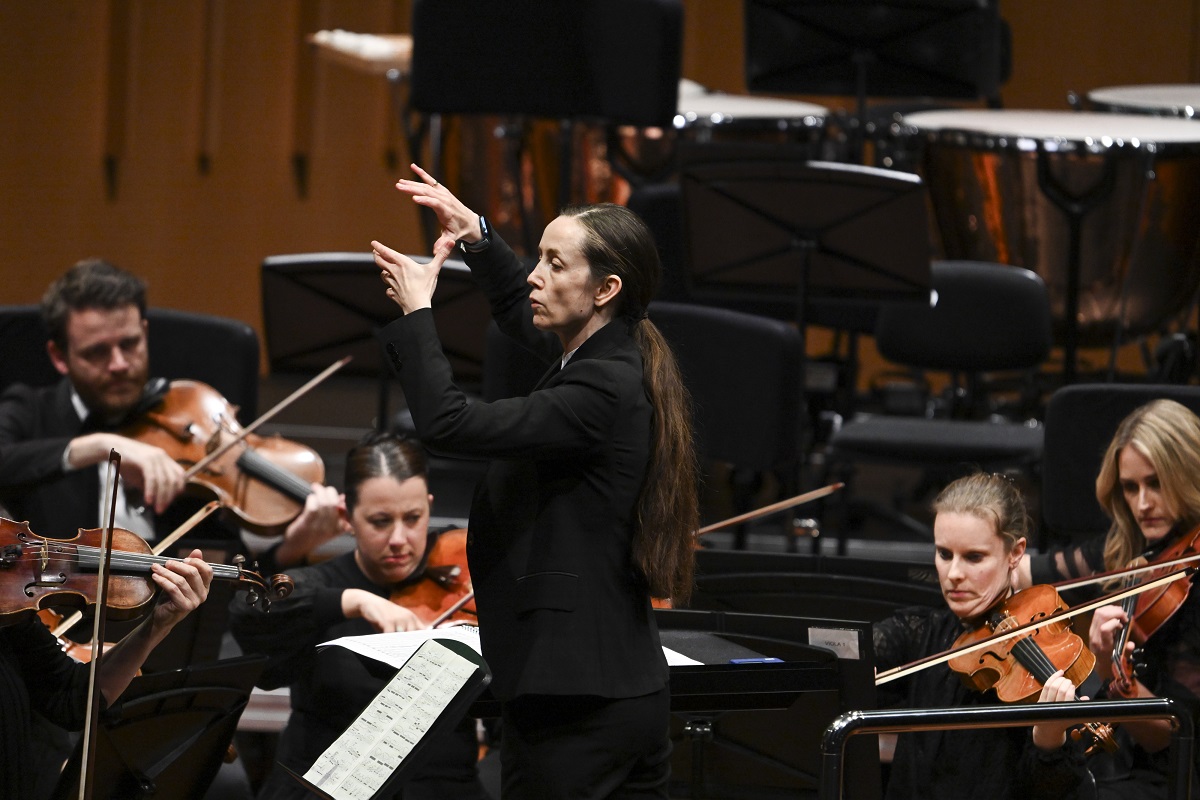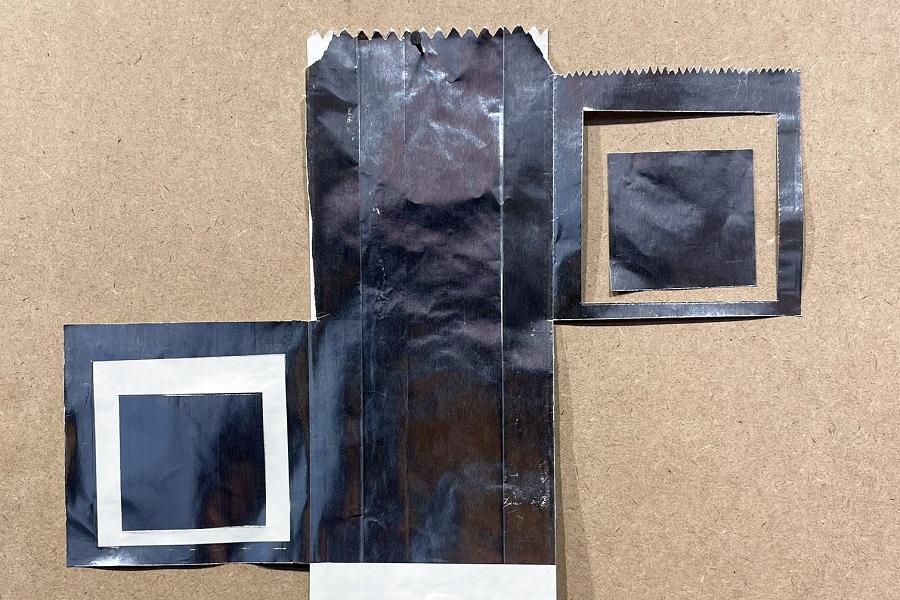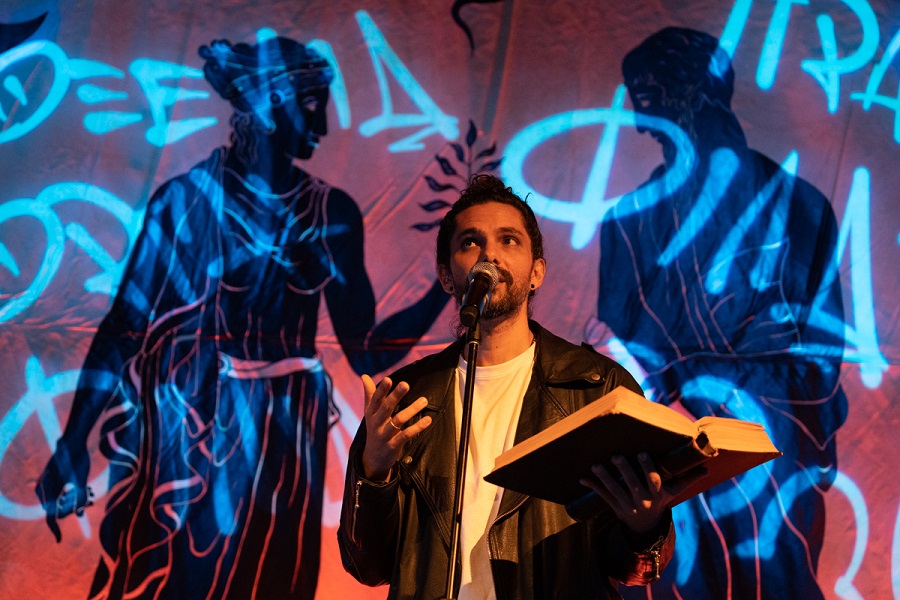The characterisation of Oscar Wilde by Callum Linnane is convincing in its unforced simplicity. And Ako Kondo as the nightingale in the fairytale magnificently suggests the fragility – the paltriness – of Wilde’s connection with his wife and his own heterosexual identity.
The second act is similarly patterned, combining memories of Wilde’s affair with Lord Alfred Douglas (Benjamin Garrett) with a fretful sketch of The Picture of Dorian Gray. Wilde himself appears as the figure in the portrait that ages while its subject remains forever youthful.
The new ballet is “triumphantly Wildean”.Credit: Jason South
For the most part, Wheeldon’s choreography has a timeless, almost yearning, quality – full of allusion and metaphor – which he punctuates with woozy exaggerations, playful parodies and pitiful spasms.
But it is impossible to detail all the achievements of this production here. There is the strength of the ensemble, the power of the orchestra, the dynamism of the staging, the all-round theatre craft. It goes on and on.
Loading
Of course, we get only a partial view of Wilde’s life. How could it be anything else? And yet, with its daring confusion of life and art in ways that can seem like a trap for the unwary spectator, Oscar has a quality – a strangeness and a glamour – that is authentically and triumphantly Wildean.
Reviewed by Andrew Fuhrmann
MUSICALS and OPERA
Sweeney Todd ★★★
Victorian Opera, Arts Centre Melbourne, until September 21
With Sweeney Todd, Stephen Sondheim elevated a popular genre of throwaway entertainment, the Victorian-era penny dreadful, into so much more than a moody and ghoulish musical thriller.
It’s a lurid tale, to be sure. A barber-turned-serial killer joins forces with his partner in crime, Mrs Lovett, who grinds the victims into mince and bakes them into pies in her shop below. And yet nothing Sondheim touched remained imprisoned by genre.
From a musical standpoint, the work sits perched between musical theatre and opera, like one of the caged birds in the story, blinded to increase its powers of song. From a dramatic one, Sondheim’s inimitable wit surfs the murk of a black comic social satire, positively throbbing with Hobbesian misanthropy, to the very shores of revenge tragedy.
This Victorian Opera production retains the grime and grand guignol (as well as director Stuart Maunder and some key cast members) of its 2015 incarnation, and it’s at its best in musical theatre mode.

The chemistry between the lead performers is wicked and sublime.Credit: Charlie Kinross
One key advantage over its predecessor is the casting of Ben Mingay as Sweeney. He powerfully inhabits the anguish of a naive man tormented beyond endurance by injustice, and the brooding implacability of the nihilistic vigilante, and then the monster that he becomes. That feat eluded Teddy Tahu Rhodes (in a performance undermined by robotic acting) in 2015, and it doesn’t come at the expense of vocal power: Mingay’s sepulchral baritone echoes and enthrals.
Antoinette Halloran reprises Mrs Lovett with diabolical glamour. I won’t vouch for the Cockney accent, but the chemistry with Mingay is wicked and sublime and there’s genuine pathos in the last step she takes on the road to hell – the appalling irony of Not While I’m Around, opposite the terrific Mat Verevis as the street urchin who’s the true victim of the piece.
Unfortunately, Lachlann Lawton and Alessia Pintabona aren’t great as the young romantic leads. Unalloyed purity doesn’t exist in this world, and I wanted to hear and feel the undercurrents of corruption Sondheim finds in these unwary souls. Where’s Johanna’s resentment at the operatic sweetness of Green Finch and Linnet Bird? Where’s the disturbing, obsessive, stalkerish quality to the yearning in Johanna?
Adrian Tamburini’s Judge Turpin has vocal authority and stage presence enough to make one topless scene seem gratuitous.

From a musical standpoint, Sweeney Todd sits perched between musical theatre and opera.Credit: Charlie Kinross
Kanen Breen is marvellously repellent as the Beadle; likewise Euan Fistrovic Doidge as the con-artist barber who becomes Sweeney’s first kill. Both caricatures have a Dickensian quality, something inconsistently achieved by Margaret Trubiano’s showy Beggar Woman.
Sondheim had a marked preference for actors who can sing, over singers who can act. He would’ve loved the 2019 production starring Anthony Warlow and Gina Riley and might well have lamented – despite the dark lustre of Mingay and Halloran – the slide into operatic accomplishment over dramatic complexity this time around.
Reviewed by Cameron Woodhead
MUSIC
Tan Dun: Nine ★★★★
Melbourne Symphony Orchestra, Hamer Hall, September 14
Seeking common ground between his own works and those of Beethoven, Chinese composer-conductor Tan Dan offered a thought-provoking musical conversation between East and West, old and new in this one-off Melbourne Symphony Orchestra program.

Composer and conductor Tan Dun leads the MSO at Hamer Hall, September 14, 2024.Credit: Laura Manariti
Opening with Beethoven’s overture to his only ballet, The Creatures of Prometheus, Dun delivered a tight and cohesive account, the orchestra in an eagerly responsive mood.
Dun’s Hero Concerto for violin is drawn from his music for the 2002 film Hero, forming the central component of his Martial Arts Trilogy which also features material from Crouching Tiger, Hidden Dragon and The Banquet. Soloist Lu Siqing, like Dun himself, is a seasoned performer and gave a commanding and committed performance of this music which calls for two violins; one “western” instrument and another that is tuned differently and restrung with silk strings.
In its bicentenary year, Beethoven’s Symphony No.9 has lost none of its lustre. Its exultant final celebration of human solidarity, achieved through the composer’s stirring setting of Schiller’s Ode to Joy, continues to express humanity’s highest aspirations.
Inspired by this famous finale, Dun’s Choral Concerto: Nine finds parallels between Schiller and ancient Chinese poetry. The three-movement work resourcefully explores the extraordinary versatility of the human voice, with percussive effects, humming and the stretching vowels like a piece of elastic, all contributing to Dun’s unique soundworld.

Soloist Soloist Lu Siqing and conductor Tan Dun in a performance of Nine at Hamer Hall in Melbourne. Credit: Laura Manariti
Using extreme contrasts of dynamics and fast tempos, Dun’s vibrant reading of an abridged version of Beethoven’s symphonic finale created something of a musical firecracker, lighting up an ebullient conclusion.
Expressing a vision of human peace and harmony in words and music is a relatively easy task but realising that vision and seeking common ground in daily life is rather more difficult. After a torrid month, the talented and hardworking players of the MSO know this only too well.
Reviewed by Tony Way
MUSIC
Handel’s House ★★★★★
Australian Brandenburg Orchestra, Melbourne Recital Centre, September 12
George Frederic Handel would doubtless have enjoyed the delicious twist of history in that his primary London residence 200 years later shared a wall with the flat of legendary electric guitarist Jimi Hendrix. Both were outsiders who took London by storm, both were shrewd entrepreneurs.

Soprano Yukie Sato performs with the Australian Brandenberg Orchestra at the Melbourne Recital Centre, September 12, 2024.Credit: Laura Manariti
Three hundred years after Handel moved into 25 Brook Street, another savvy showman, Paul Dyer, and the Australian Brandenburg Orchestra are helping another new talent take Australia by storm: the Japanese soprano Yukie Sato.
Sato’s program of Handel arias left her listeners in no doubt as to her command of this rich musical treasury. On both musical and dramatic planes, she provided a vivid realisation of the composer’s astonishing creative breadth.
Perhaps a little timid at first in a selection from The Triumph of Time and Disillusionment, Sato soon brought coloratura as glittering as her first gown of the evening to Dopo notte from Ariodante and vehement rage to Ah! Ruggiero, crudel from Alcina, an opera made famous by Australia’s own Joan Sutherland.
Loading
Clad in a vibrant red dress for the second half, Sato impressed with richly expressive contrasts in L’amor ed il destin’ from Partenope and M’allontano, sdegnose pupille from Atalanta. Radiating overflowing joy, she returned to Alcina, giving an ecstatic account of Tornami a vagheggiar, singing the middle section sitting on the edge of the stage, something Dame Joan would never have countenanced.
Carefully interwoven with the vocal music came orchestral items predominantly highlighting the considerable soloistic talents of the orchestra’s concertmaster Shaun Lee-Chen, including an unjustly neglected concerto by the famous baroque violinist Johann Georg Pisendel.
Although Sato’s singing made spirits soar, this concert was a sad reminder of the lamentably long time that has elapsed since Melbourne audiences were treated to a truly memorable, fully professional, fully staged performance of a Handel opera.
Reviewed by Tony Way
The Booklist is a weekly newsletter for book lovers from books editor Jason Steger. Get it every Friday.





